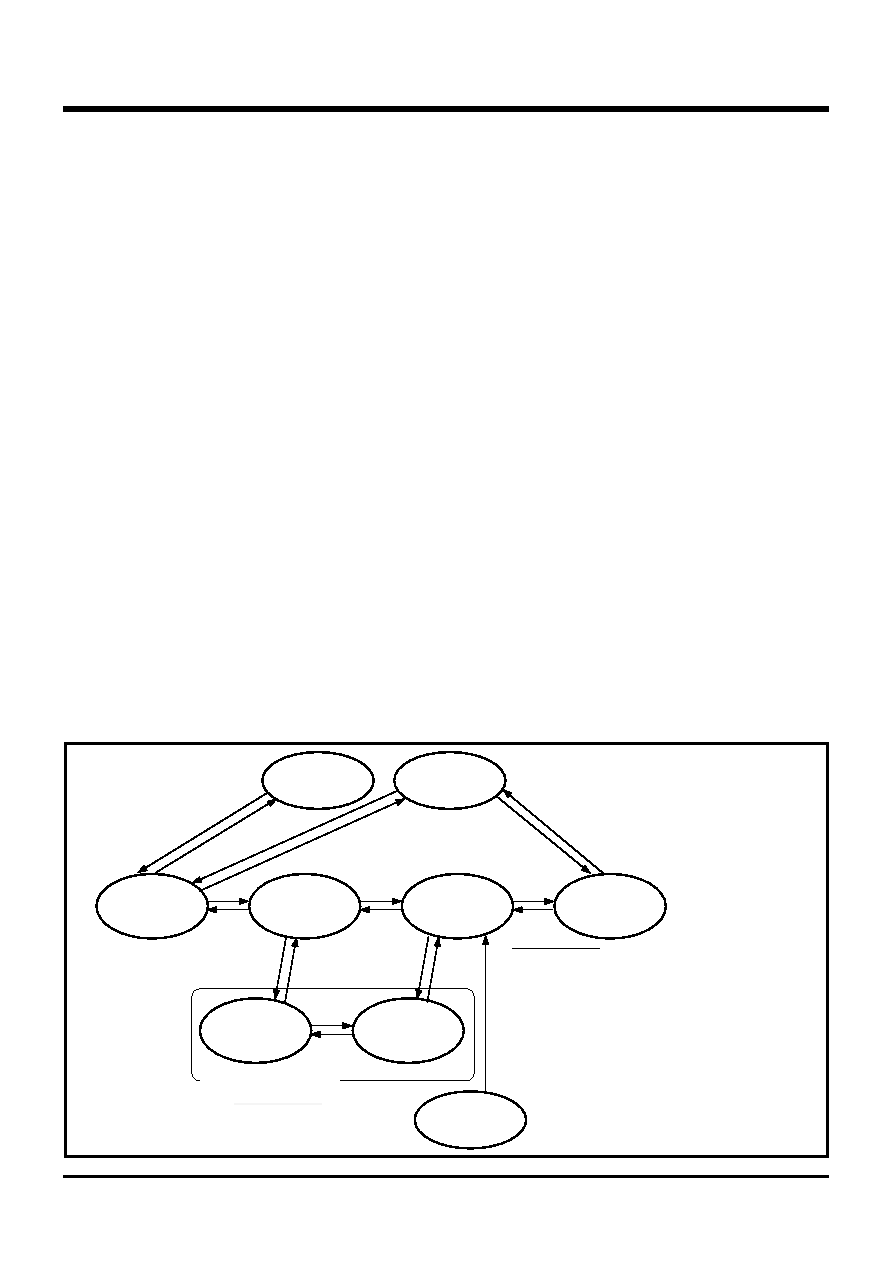- 您現(xiàn)在的位置:買賣IC網(wǎng) > PDF目錄45034 > M37540M4T-XXXGP 8-BIT, MROM, 4 MHz, MICROCONTROLLER, PQFP32 PDF資料下載
參數(shù)資料
| 型號: | M37540M4T-XXXGP |
| 元件分類: | 微控制器/微處理器 |
| 英文描述: | 8-BIT, MROM, 4 MHz, MICROCONTROLLER, PQFP32 |
| 封裝: | 7 X 7 MM, 0.80 MM PITCH, PLASTIC, LQFP-32 |
| 文件頁數(shù): | 133/366頁 |
| 文件大?。?/td> | 4237K |
| 代理商: | M37540M4T-XXXGP |
第1頁第2頁第3頁第4頁第5頁第6頁第7頁第8頁第9頁第10頁第11頁第12頁第13頁第14頁第15頁第16頁第17頁第18頁第19頁第20頁第21頁第22頁第23頁第24頁第25頁第26頁第27頁第28頁第29頁第30頁第31頁第32頁第33頁第34頁第35頁第36頁第37頁第38頁第39頁第40頁第41頁第42頁第43頁第44頁第45頁第46頁第47頁第48頁第49頁第50頁第51頁第52頁第53頁第54頁第55頁第56頁第57頁第58頁第59頁第60頁第61頁第62頁第63頁第64頁第65頁第66頁第67頁第68頁第69頁第70頁第71頁第72頁第73頁第74頁第75頁第76頁第77頁第78頁第79頁第80頁第81頁第82頁第83頁第84頁第85頁第86頁第87頁第88頁第89頁第90頁第91頁第92頁第93頁第94頁第95頁第96頁第97頁第98頁第99頁第100頁第101頁第102頁第103頁第104頁第105頁第106頁第107頁第108頁第109頁第110頁第111頁第112頁第113頁第114頁第115頁第116頁第117頁第118頁第119頁第120頁第121頁第122頁第123頁第124頁第125頁第126頁第127頁第128頁第129頁第130頁第131頁第132頁當(dāng)前第133頁第134頁第135頁第136頁第137頁第138頁第139頁第140頁第141頁第142頁第143頁第144頁第145頁第146頁第147頁第148頁第149頁第150頁第151頁第152頁第153頁第154頁第155頁第156頁第157頁第158頁第159頁第160頁第161頁第162頁第163頁第164頁第165頁第166頁第167頁第168頁第169頁第170頁第171頁第172頁第173頁第174頁第175頁第176頁第177頁第178頁第179頁第180頁第181頁第182頁第183頁第184頁第185頁第186頁第187頁第188頁第189頁第190頁第191頁第192頁第193頁第194頁第195頁第196頁第197頁第198頁第199頁第200頁第201頁第202頁第203頁第204頁第205頁第206頁第207頁第208頁第209頁第210頁第211頁第212頁第213頁第214頁第215頁第216頁第217頁第218頁第219頁第220頁第221頁第222頁第223頁第224頁第225頁第226頁第227頁第228頁第229頁第230頁第231頁第232頁第233頁第234頁第235頁第236頁第237頁第238頁第239頁第240頁第241頁第242頁第243頁第244頁第245頁第246頁第247頁第248頁第249頁第250頁第251頁第252頁第253頁第254頁第255頁第256頁第257頁第258頁第259頁第260頁第261頁第262頁第263頁第264頁第265頁第266頁第267頁第268頁第269頁第270頁第271頁第272頁第273頁第274頁第275頁第276頁第277頁第278頁第279頁第280頁第281頁第282頁第283頁第284頁第285頁第286頁第287頁第288頁第289頁第290頁第291頁第292頁第293頁第294頁第295頁第296頁第297頁第298頁第299頁第300頁第301頁第302頁第303頁第304頁第305頁第306頁第307頁第308頁第309頁第310頁第311頁第312頁第313頁第314頁第315頁第316頁第317頁第318頁第319頁第320頁第321頁第322頁第323頁第324頁第325頁第326頁第327頁第328頁第329頁第330頁第331頁第332頁第333頁第334頁第335頁第336頁第337頁第338頁第339頁第340頁第341頁第342頁第343頁第344頁第345頁第346頁第347頁第348頁第349頁第350頁第351頁第352頁第353頁第354頁第355頁第356頁第357頁第358頁第359頁第360頁第361頁第362頁第363頁第364頁第365頁第366頁

7540 Group User’s Manual
2-142
APPLICATION
2.9 Oscillation control
2.9.5 State transition
In the 7540 Group, the operation clock is selected from the following 4 types.
f(XIN)/2 (high-speed mode)
f(XIN)/8 (middle-speed mode)
Ring oscillator
f(XIN) (double-speed mode) (Note 1)
Note 1: f(XIN) can be used only at the ceramic oscillation. Do not use f(XIN) at RC oscillation.
Also, in the 7540 Group, the function to stop CPU operation by software and to keep CPU wait in the
following 2-type low power dissipation.
q Stop mode with the STP instruction (Notes 2, 3, 4, 5, 6, 7)
q Wait mode with the WIT instruction (Note 8)
Notes 2: When the stop mode is used, set the oscillation stop detection function to “invalid”.
3: When the stop mode is used, set “0” (STP instruction enabled) the STP instruction disable bit
of the watchdog timer control register.
4: Timer 1 can be used to set the oscillation stabilizing time after release of the STP instruction. The
oscillation stabilizing time after release of STP instruction can be selected from “set automatically”/
“not set automatically” by the oscillation stabilizing time set bit after release of the STP instruction
of MISRG. When “0” is set to this bit, “0116” is set to timer 1 and “FF16” is set to prescaler 1
automatically. When “1” is set to this bit, nothing is set to timer 1 and prescaler 1. Therefore, set
the wait time according to the oscillation stabilizing time of the oscillation. Also, when timer 1 is
used, set values again to timer 1 and prescaler 1 after system is returned from the stop mode.
5: The STP instruction cannot be used during CPU is operating by the ring oscillator.
6: When the stop mode is used, stop the ring oscillator oscillation.
7: Do not execute the STP instruction during the A-D conversion.
8: When the wait mode is used, stop the clock except the operation clock source.
Figure 2.9.9 shows the state transition.
Fig. 2.9.9 State transition
Stop mode
Wait mode
WIT
instruction
Oscillation stop detection circuit valid
CPUM4
←12
MISRG1
←12
Interrupt
STP
instruction
WIT
instruction
Interrupt
MISRG1
←02
CPUM3
←12
CPUM3
←02
CPUM76
←102
CPUM76
←002
012
112
(Note 2)
CPUM4
←02
MISRG1
←12
MISRG1
←02
Reset released
State 1
Operation clock source:
f(XIN) (Note 1)
f(XIN) oscillation enabled
Ring oscillator stop
State 2
Operation clock source:
f(XIN) (Note 1)
f(XIN) oscillation enabled
Ring oscillator enabled
State 3
Operation clock source:
Ring oscillator (Note 3)
f(XIN) oscillation enabled
Ring oscillator enalbed
State 4
Operation clock source:
Ring oscillator (Note 3)
f(XIN) oscillation stop
Ring oscillator enalbed
Notes on switch of clock
(1) In operation clock source = f(XIN), the following can be
selected for the CPU clock division ratio.
q f(XIN)/2 (high-speed mode)
q f(XIN)/8 (middle-speed mode)
q f(XIN) (double-speed mode, only at a ceramic oscillation)
(2) Execute the state transition state 3 to state 2 or
state 3’ to state 2’ after stabilizing XIN oscillation.
(3) In operation clock source = ring oscillator, the middle-
speed mode is selected for the CPU clock division ratio.
(4) When the state transition state 2
→ state 3 → state 4
is performed, execute the NOP instruction as shown below
according to the division ratio of CPU clock.
CPUM76
→ 102 (State 2 → state 3)
NOP instruction
CPUM4
→ 12 (State 3 → state 4)
Double-speed mode at ring oscillator: NOP 3
High-speed mode at ring oscillator: NOP 1
Middle-speed mode at ring oscillator: NOP 0
Reset state
CPUM76
←102
CPUM76
←002
012
112
(Note 2)
State 2’
Operation clock source:
f(XIN) (Note 1)
f(XIN) oscillation enabled
Ring oscillator enabled
State 3’
Operation clock source:
Ring oscillator (Note 3)
f(XIN) oscillation enabled
Ring oscillator enalbed
相關(guān)PDF資料 |
PDF描述 |
|---|---|
| M37540E2FP | 8-BIT, OTPROM, 4 MHz, MICROCONTROLLER, PDSO36 |
| M37540E8SP | 8-BIT, OTPROM, 4 MHz, MICROCONTROLLER, PDIP32 |
| M37540E8V-XXXGP | 8-BIT, OTPROM, 4 MHz, MICROCONTROLLER, PQFP32 |
| M37540E2SP | 8-BIT, OTPROM, 4 MHz, MICROCONTROLLER, PDIP32 |
| M37540M4T-XXXFP | 8-BIT, MROM, 4 MHz, MICROCONTROLLER, PDSO36 |
相關(guān)代理商/技術(shù)參數(shù) |
參數(shù)描述 |
|---|---|
| M37540M4V-XXXFP | 制造商:RENESAS 制造商全稱:Renesas Technology Corp 功能描述:8-BIT CISC SINGLE-CHIP MICROCOMPUTER 740 FAMILY / 740 SERIES |
| M37540M4V-XXXGP | 制造商:RENESAS 制造商全稱:Renesas Technology Corp 功能描述:8-BIT CISC SINGLE-CHIP MICROCOMPUTER 740 FAMILY / 740 SERIES |
| M37540M4-XXXFP | 制造商:RENESAS 制造商全稱:Renesas Technology Corp 功能描述:8-BIT CISC SINGLE-CHIP MICROCOMPUTER 740 FAMILY / 740 SERIES |
| M37540M4-XXXGP | 制造商:RENESAS 制造商全稱:Renesas Technology Corp 功能描述:SINGLE-CHIP 8-BIT CMOS MICROCOMPUTER |
| M37540M4-XXXSP | 制造商:RENESAS 制造商全稱:Renesas Technology Corp 功能描述:8-BIT CISC SINGLE-CHIP MICROCOMPUTER 740 FAMILY / 740 SERIES |
發(fā)布緊急采購,3分鐘左右您將得到回復(fù)。